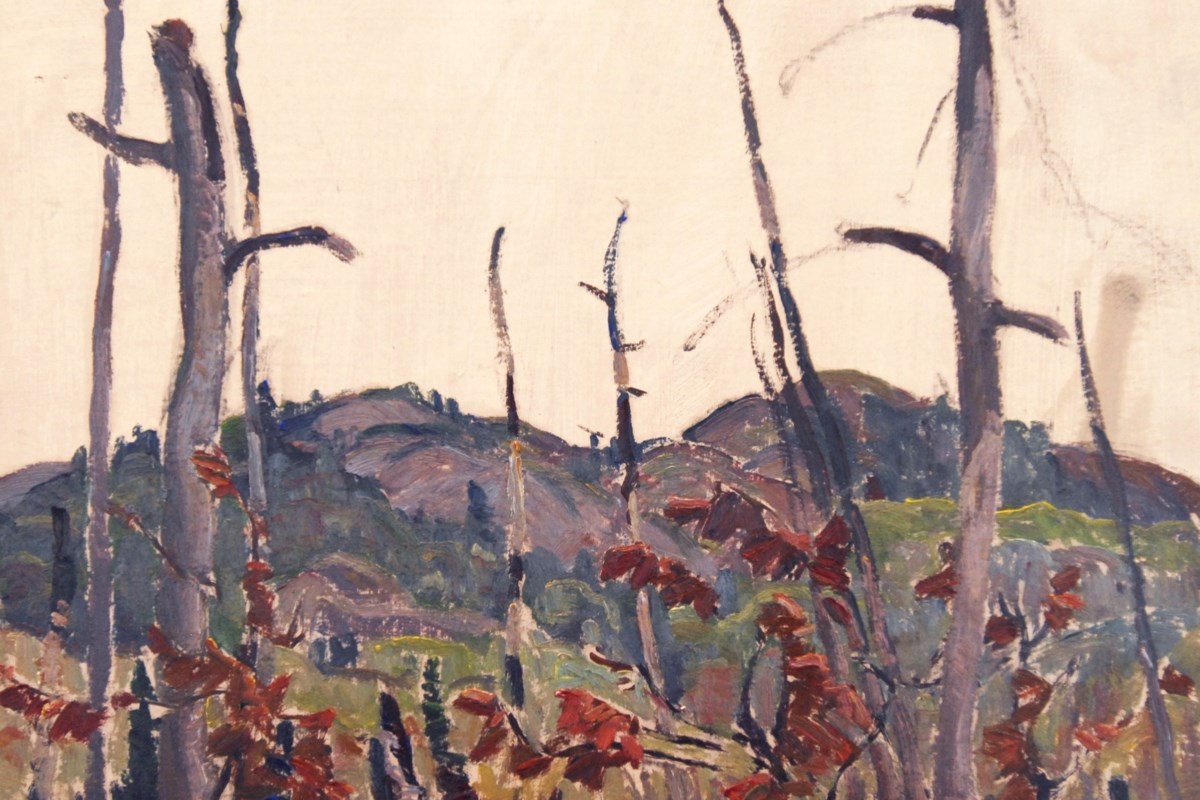The Art Gallery of Sudbury is holding a major new exhibition on Group of Seven artist Franklin Carmichael (1890-1945) titled An artist’s process.
The exhibition was produced by the Gallery with generous access by members of Franklin Carmichael’s family, the Estate of Franklin Carmichael, and funding from the Government of Canada through Canadian Heritage.
“The works of art in the exhibition are of outstanding significance by their close association with a person, Canadian artist Franklin Carmichael (1890-1945), and a group of artists, the Group of Seven (1920-1932), who were emblematic of a critically significant early 20th-century national modernist art movement,” says a gallery news release.
Franklin Carmichael, the youngest original member of Canada’s most storied group of artists, the Group of Seven, first visited the region in 1924. From then on, until he passed away in 1945, his paintings, drawings, and prints captured the beautiful light and rugged landscape of La Cloche region in the District of Sudbury.
Showcasing 37 original drawings and paintings from the artist’s estate, most never before exhibited, this exhibition provides visitors with an exclusive preview of the foundational gift of the future Franklin Carmichael Art Gallery of Sudbury.
“The exhibition provides a wonderfully intimate look at the artist’s approach to painting landscape. There is a tremendous resonance in Franklin Carmichael’s practice of painting outdoors, en plein air, on site (in his case, usually from a height) with a great view of La Cloche or Lake Superior or a smaller northern town like Cobalt before him, with that of very many of our regional artists today, both professional and amateur. Artists, residents and visitors to our beautiful region alike find the experience of being in nature, in the great outdoors, whether hiking, canoeing, photographing or painting, to be essential to health and quality of life.
“When Franklin Carmichael died suddenly, all of his art works, including many that he was still working on, fell into the care of his family. These works reveal the materials he used, his palette of colours, how he prepared a panel or painting surface, his preliminary sketch, his form of composition, and his process of painting, whether in oils or in watercolour. We consider it a tremendous responsibility and privilege to bring works like these in the public sphere, works that the artist himself may never have intended to be exhibited. We have approached this special exhibition with the utmost respect and care.
Franklin Carmichael (1890-1945) was the youngest founding member of the Group of Seven.
In addition to his association with the Group of Seven, Franklin Carmichael held memberships in numerous art societies, including the Canadian Society of Painters in Water Colour (founding member, 1925; president, 1932-1934), Canadian Group of Painters (founding member, 1933), and Ontario Society of Artists (president, 1937-1940). In 1932, he became head of the Graphic Design and Commercial Art Department at the Ontario College of Art, Toronto, where he was a distinguished teacher until his death in 1945. He was elected to the Royal Canadian Academy in 1935 and became a full academician in 1938.
Franklin Carmichael was born in Orillia, Ontario. By 1911 he was working in Toronto, for the commercial art firm, Grip Limited, which served as a catalyst for his introduction to artists such as J.E.H. MacDonald (1873-1932), Arthur Lismer (1885-1969), Tom Thomson (1877-1917) and Lawren Harris (1885-1970). Carmichael studied in evening courses at the Ontario College of Art with G.A. Reid (1860-1947) and William Cruikshank (1849-1922), and at the Toronto Technical School with Gustav Hahn (1866-1962). From 1913 to 1914, Carmichael continued his education in Europe, attending the Royal Academy of Fine Arts in Antwerp, Belgium, where Arthur Lismer and Fred Varley (1881-1969) had studied. In 1915 he married Ada Lillian Went. Following his marriage, he worked in Toronto for the commercial art firm, Rous and Mann, where he met A.J. Casson (1898-1992).[1]
The original members of the Group of Seven were Franklin Carmichael, Lawren Harris, A.Y. Jackson, Franz Johnston, Arthur Lismer, J.E.H. MacDonald and F.H. Varley. Tom Thomson was a peer and a leading influence but died before the Group was formed. All except Lawren Harris made their living as commercial artists.
How to visit during Covid-19:
Pre-book your visit online at artsudbury.org or call (705) 675-4871 to make your booking. There are five different time spots available each day. You and your group will have exclusive access to the Gallery and gift shop for one hour. We can accommodate small groups of one to eight persons from the same family or social bubble. Visitors and staff conform to Covid-19 precautions as outlined by Health Unit Sudbury and District: masks and gloves are provided as necessary, social distancing, with hand sanitizing stations. Gallery touch points including washrooms are sanitized between tours.
The exhibition continues until December 24. Admission is by donation.
The Art Gallery of Sudbury is located at 251 John Street.
Source:- Sudbury.com
Source link
